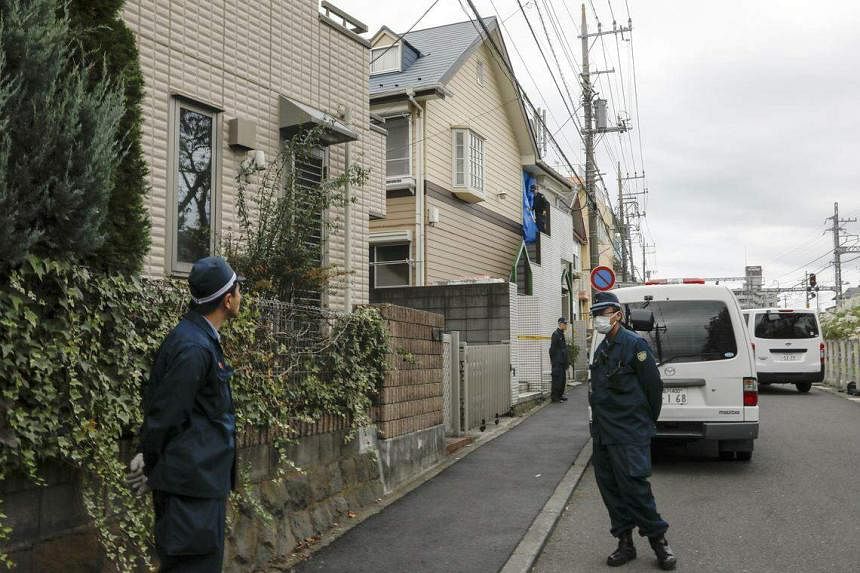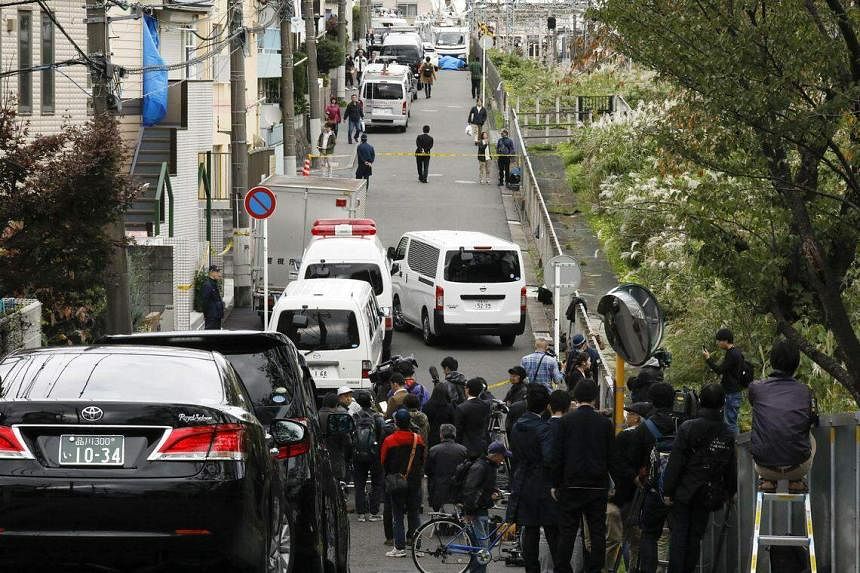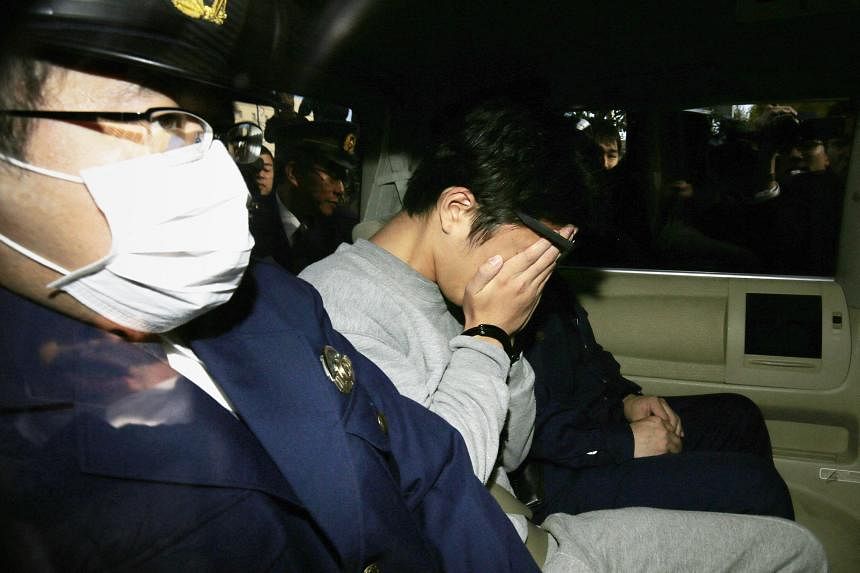TOKYO – On Halloween in 2017, Japanese police made a chilling find in a studio apartment near Tokyo – nine human heads and 240 bones.
The tenant, Takahiro Shiraishi, had killed nine people and sawed the corpses into parts, hacking off the flesh and small bones to be dumped as rubbish while stashing away the larger bones in cooler boxes.
The murders were committed in less than three months between August and October 2017.
Shiraishi had baited suicidal and vulnerable people on the former social media platform Twitter – now called X – by offering empathy to win their trust, and expertise on how to end it all by posing as a specialist in hanging.
The self-proclaimed “hanging pro”, who turns 33 in October, is now in a maximum-security prison waiting for his death sentence – by hanging – to be meted out following his sentencing in December 2020.
Shiraishi’s motives were sex and money. None of his victims wanted to die when he killed them.
He drugged, raped, robbed, murdered and then dismembered his eight female victims. His lone male victim, who also once harboured suicidal thoughts, was an acquaintance of the first female victim, and had come too close to sniffing Shiraishi out.
Japan is often portrayed as a pressure-cooker, isolationist society with high suicide rates, though contrary to the stereotype, the number of suicides has fallen from the peak of 34,427 in 2003 to hover around 20,000 annually now.
But suicide remains the top cause of death for those aged 39 and below.
With every shocking case like Shiraishi’s comes calls for tighter regulations and more scrutiny over social media and the Dark Web, though there are limits to what can be done.
‘I wish I were the 10th victim’
Freelance journalist Tetsuya Shibui, who interviewed Shiraishi three times in detention, told The Straits Times in the sixth episode of the True Crimes Of Asia podcast series that Shiraishi has been revered by some women, who said outright that they wished they could have been his 10th victim.
“He comes across just like any 20-something who you can shoot the breeze with,” Mr Shibui said, noting that the soft-spoken Shiraishi had a knack of being sensitive to the vulnerable.
“Some of them are women who have suffered repeated sexual abuse, with the police refusing to take up the case, others suffer domestic violence or manipulation,” said Mr Shibui, who has published a book about the murders.
While Shiraishi had mainly used two social media accounts, “Hanging Pro” and “I Want To Die”, these were among six handles that he used to interact with 37 different accounts over three months. Altogether, he met 13 people, killing nine of them.
Before he became a serial killer, he was a recruiter in the seedy Kabukicho red-light district in Tokyo’s Shinjuku. He was arrested and given a suspended sentence for illegally prostituting minors.
Craving love but jobless and unwilling to put in the hard work, he cocooned himself in social media, where he baited suicidal women by posing as if he were suicidal himself.
That worked – and he found a woman whom he convinced to fork out the down payment for his apartment. But the veneer of a happy life soon faded and jealousy reared its ugly head when she grew close to a male friend.
He knocked her unconscious and, filled with uncontrollable lust, raped her. But it came to his mind that she would report the sexual assault if she went home alive – and he would then be thrown into jail.

This train of thought led him down the rabbit hole of murder, using people without means to fulfil his lust and then hacking up their bodies to hide the evidence – but letting off those with money, as he hoped to continually leech off them.
That he would otherwise have been a stranger to the victims if not for social media had made it difficult for the police to hunt him down. Shiraishi has said that if he had not been caught, he would have continued the murder spree forever – or at least until he found a woman who would financially support him.
It was only when the brother of his final victim logged in to her account that Shiraishi’s game was up.
Mr Shibui told ST that this case was by far the most tragic in his three-decade journalism career.
“For the bereaved families, they cannot get closure and properly say goodbye because the corpses are not intact and there is no body,” he said. Having an intact body is especially important in Japanese culture, and the way the victims’ dignity was trampled on was very painful for the families, he added.

Misery loves company
In the early 2000s, the proliferation of the Internet led to a phenomenon in Japan where total strangers used online messaging boards or forums to enter into suicide pacts.
Among the mass suicides was one in October 2004, when seven strangers from across the country, including Aomori prefecture in the north-east and Saga prefecture in the south-west, met in Saitama prefecture, north of Tokyo, and killed themselves through carbon monoxide poisoning in a rented vehicle.
The growing use of the Internet also created a new breed of criminal of Shiraishi’s ilk – murderers who prey on helpless victims by offering to die with them, but without any intent of their own to die.
In 2005, Osaka native Hiroshi Maeue used a suicide messaging board to lure his three victims – a 14-year-old boy, a 25-year-old woman, and a 21-year-old man – to meet him in person, and choked them to death with his bare hands.
He confessed to feeling a thrill at seeing life slip away from his victims, having developed the desire to kill as a child. He was hanged in 2009.
As for Shiraishi, he benefited from loosely regulated social media, using Twitter to hunt for people who had posted messages about suicide or wanting to die. He chatted them up via direct messaging, and shifted to private messaging apps such as Line or KakaoTalk to communicate with prospective victims.
The murders he committed have prompted soul-searching by the authorities over how they can more effectively reach high-risk people.
Japan, owing to its freedom-of-expression laws, adopted a loose-touch approach in curbing online speech. The Shiraishi case, however, led the government to request that social media operators redirect those who post messages about killing themselves to helplines or resources such as tips for self-care.
In extreme cases, social media operators are empowered to scrub any murmurings about suicide, or posts that induce or solicit suicide, off their platforms, and to freeze or suspend accounts for repeated violations.
“People who have suicidal thoughts often violently oscillate between the feeling of ‘wanting to die’ and ‘wanting to live’, which are signs that are indicative of suicide risk,” said a government report issued in the wake of the murders carried out by Shiraishi.
“It can be said that some posts on social media, like ‘I want to die’, or ‘I want to disappear’, or ‘I don’t want to live’ correspond to these signs. It is thus necessary to encourage those who write such posts to access counselling, by developing a system where they can get support as needed.”
The report added: “It is important to send SOS messages when in distress, but it is also necessary to educate people that sending SOS messages on social media can be dangerous.”
Among other things, psychiatric counselling was made available on social media and instant messaging platforms to make it more accessible for those at risk.
Yet, these measures have failed to stop similar cases.
In September 2019, student Mizuki Kitajima, 22, murdered Ms Hiromi Araki, 36, at a love hotel in Tokyo’s Ikebukuro district by strangling her with his hands. Kitajima had aspired to become a teacher but failed the teacher’s exam, and considered suicide.
He rationalised his actions in court by saying that he “wanted to be useful to society by helping people achieve their goals”, and that he had approached many people online who seemed to be in distress.
He was jailed for five years in April 2020.
In September 2022, former salaryman Yuya Nozaki, 29, coaxed a suicidal 13-year-old girl into killing herself, even facilitating the act by driving her to a river bridge deep in a mountain range.
The Yokohama native was said to have harboured an “abnormal obsession” with women and enjoyed the power he had exerted over his victim. He was jailed for 5½ years in August 2023.
Vanishing people
Dr Hiroki Nakamori of Rikkyo University in Tokyo is a researcher on escapism and the sociology of missing people in Japan.
“I don’t think it’s necessarily a bad thing to run away from what one may sense is immediate danger or the root of their problems,” he told ST.
“But one’s fate can easily change by 180 degrees, depending on whom they meet. They may recover from their depression and return to society, or they may get taken advantage of, or worse.”
Dr Nakamori said it is not possible to entirely regulate the Internet, given the many loopholes that exist. Imposing guidelines can force victims to go underground into the Dark Web, which is more difficult to police. Some may resort to coded language to avoid censorship, leading to a cat-and-mouse chase.
And it would also be difficult to unravel comments made in a half-joking way, he said, giving as an example: “I’d rather die than go to work tomorrow.”
He felt that a more proactive approach was necessary to ensure that those who are vulnerable have a robust, high-quality support network.
“What lawmakers lose sight of is that, for people who say they want to kill themselves, many would already have known or would have been using the helplines that are available to them,” he said.
“But their world is so dark that they reject that glimmer of light – rather, they want someone who can connect with them through their pain.”


